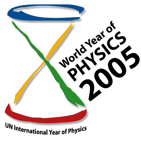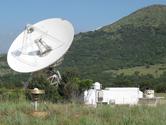SKA RFI Project: Request for Proposal to conduct Radio Frequency Interference Desktop Studies
Questions and Answers
Question 1.
Will sections 12.7 and 3.3.2 stop certain individuals doing contract work for the NRF / SKA from taking part in this proposal as Team or Consortium members? They are currently involved in another project with SKA. We need to be assured that their involvement in any offer to this RFP will not disqualify such offer.
Answer 1.
The intention of sections 12.7 and 3.3.2 is to discourage undue contact with NRF officials and contractors that would be adjudicating the tender or such contact that could excerpt influence on the tender adjudication process. Section 3.3.2 aims to channel any enquires through an administrative interface rather than directly to Tender Committee members. In addition 12.7 requires disclosure of any relationships within a consortium and its members and the avoidance of any conflict of interest.
It is in this context important to note that said contractors would not be serving on the Tender Committee and that their current contracted roles are not related to the scope of this tender.
top
Question 2.
Will it be possible to email us all the documentation referred to in the footnotes of the RFP?
Answer 2.
The respective referenced documents will be published to the website, http://www.hartrao.ac.za in due course.
The following documents will be included:
- Request for Proposals for Siting the SKA, International SKA Project Office, 1 September 2004
- SKA Southern African Array, Coordinates for Core Centred on Karoo III Site, Issued: 16 February 2005 - Constitutes Annexure A to the published tender document
- Consolidated information concerning the use of the Forms of notice/submission and the file formats for electronic notification/submission of frequency assignments/allotments to stations in the fixed, mobile and other terrestrial services (excepting the broadcasting service in the LF/MF and VHF/UHF bands) (based on BR Circular-letter CR/118 and its Addendum 1), ITU Radio Communications Bureau, FXM Submission guidelines, Updates 25 October 2001, Geneva.
- Forms of notice and formats for electronic notification of LF/MF sound broadcasting assignments(Reference: BR Circular Letter CR/36 of 12 April 1995), ITU Radio Communications Bureau, Circular Letter, CR/125, 30 July 1999, Geneva.
- Forms of notice and formats for electronic notification of VHF/UHF television and VHF sound broadcasting assignments, (Reference: BR Circular-letter CR/99 of 7 August 1998), ITU Radio Communications Bureau, Circular Letter, CR/120, 31 March 1999, Geneva
- Protection criteria used for radio astronomical measurements, RECOMMENDATION ITU-R RA.769-2, 2003
top
Question 3.
Please confirm the content of section 5.2.8. There seems to be a duplication at the end.
Answer 3.
The last three words of 5.2.8 should be deleted. Section 5.2.8 should read as follows:
"Consider the ITU-R recommendation RA.769-2 on the protection criteria used for radio astronomical measurements as well as other relevant documentation including documents under development on the definition and protection of radio quite zones by the International SKA consortium."
top
Question 4.
Which of these frequency bands should be used for the study in our proposal?
Answer 4.
It is to be expected that an offer to do the RFI study across the goal frequency range would score higher in the technical evaluation than a proposal that would consider only the planned frequency range. It is not expected that increasing the frequency range would add significant cost to compiling a data base or doing the studies and proponents are encouraged to offer the broadest possible frequency range and if applicable to include cost breaks for reduced frequency ranges.
top
Question 5.
Is it possible for the NRF to provide the complete specification of the reference antenna? If not, can we do the prediction for a known antenna facing the interferer?
Answer 5.
The NRF can provide the complete and specification of the reference antennas to be used. It is, however, expected that this data is not required for preparing a response to the Request for Tender and that the computerised planning systems to be used in the RFI desktop studies will allow for easy input of receive antenna data at any future date.
In order to avoid concerns about additional information supplied during the tender process, the NRF would prefer to exchange antenna data during contract negotiations with the preferred supplier.
top
Question 6.
Does the NRF have any crucial dates/time-frame for the completion of the RFI desktop study project?
Answer 6.
The NRF has a project schedule and expectations on turn-around times for the respective phases of the desk top studies. As can be seen from the scope of work some of these phases are more urgent than others.
The NRF will be using the RFT to assess how realistic the internal turn-around time expectations are and also to compare and evaluate competing responses.
It is expected that time-frames and deliverables would be finalised during contract negotiations with the preferred supplier.
Proponents are encouraged to quote their best turn-round time per deliverable as detailed in 8.6 of the Request for Tender.
top
Question 7.
Can SKA provide the document "Request for Proposal for Siting the SKA, International SKA Project Office, 1 September 2004" to us?
Answer 7.
This document has been supplied to you under "Tender reference documents" and will shortly be published to the web (http://www.hartrao.ac.za).
top





